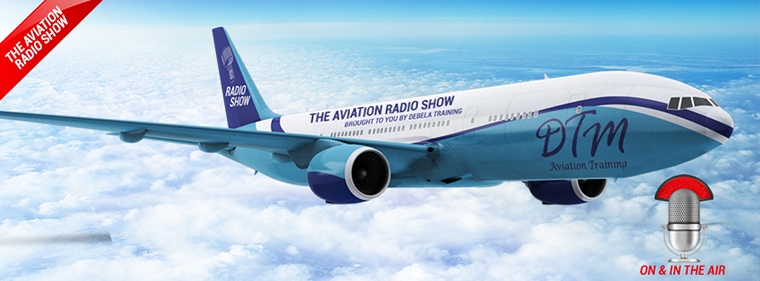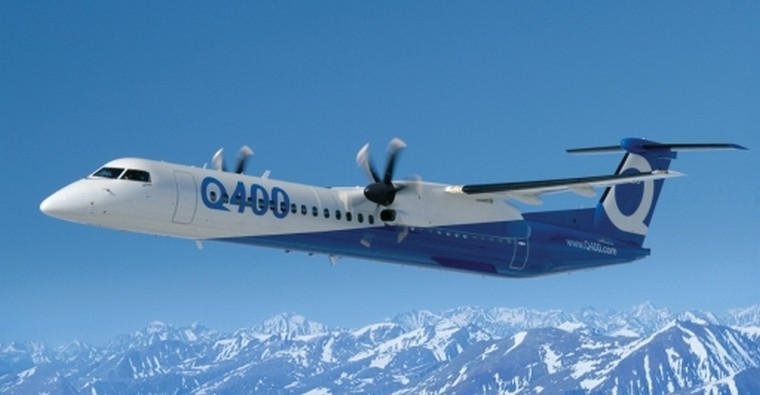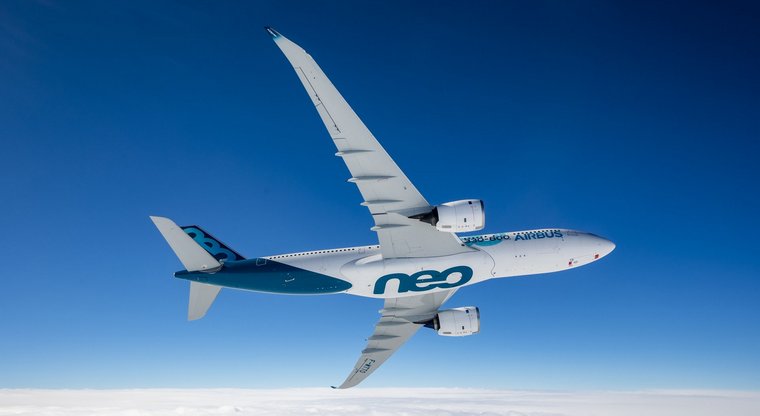








MIDWEEK UPDATE 14 NOVEMBER 2018Plan Your Weekend……..Forthcoming Events…….Aviation News Worldwide Incidents and Accidents……This Week in Aviation History    17: Lycoming Day Fly-in to Stellenbosch airfield. Contact Robin Coss Aviation Tel: 021 934 7498 Cell:082 894 0986     3rd Saturday of every month. Microland. Bring and braai. Fires and bykos provided. Fires start from 09h30. Contact person: Nick Swardt 082 441 8011 or Alan Hussey 072 82 2341 24: Springs Fun Rally - Springs Airfield. Free breakfast to all that fly in on the day. Not just rally participants. Contact e-mail: chairman@sapfa.co.za cell: 082 855 9435    1: SAAF Museum AFB Zwartkop open practise day. Officer Commanding Museum oc@saafmuseum.org.za 012 351 2290 1 to 2: Sport Aerobatics ACE of Base Brits Contact Annie Boon E-mail: chunge@mweb.co.za 5: EAA Chapter 322 meeting. Dicky Fritz Moth Hall Edenvale. Contact: kevinmarsden88@gmail.com 3rd Saturday of every month. Microland. Bring and braai. Fires and bykos provided. Fires start from 09h30. Contact person: Nick Swardt 082 441 8011 or Alan Hussey 072 82 2341 8: International Civil Aviation Day at Nelspruit airfield. Contact Pappie Maja Cell: 083 451 2627 e-mail: majap@caa.co.za 8. WAA breakfast fly-in. RSVP comms@flywaa.co.za 8: SA Landing Championships. Brits Airfield. Contact Ron Stirk melron@mweb.co.za 082 445 0373 27: St. Francis Fly In. 28 Dec as a reserve day in case of bad weather. Contact Regards Barry Culligan 083 611 3333    19 & 20: SAC Gauteng Regionals at Vereeniging airfield . Contact Annie Boon e-mail: chunge@mweb.co.za 26: SAPFA Rand Airport Challenge - Rand Airport. Contact Frank Eckard cell: 083 269 1516 e-mail: frank.eckard@mweb.co.za  The Aviation Radio Show; get all your questions answered in one place. To listen to a recording of the live broadcast click on the link: www.debela.co.za/aviation-radio-show  THE AERO CLUB OF SOUTH AFRICA TURNS 100 IN APRIL 2020 The Aero Club of South Africa turns 100 in April 2020 and we plan to celebrate this achievement by making it a memorable year for South African recreational aviation. For a small group of enthusiasts we have achieved much to be proud of, and still hold many world records. At the recent FAI Conference in Luxor I was reminded what a great team we have in Aero Club by the interactions of the other National Aero Club representatives and it made me proud to be associated with AeCSA, and proud to be a South African. We will be inviting other countries to share in our festivities, and showcase South Africa. We would welcome your input and suggestions, and most of all your enthusiasm and assistance into making 2020 a truly memorable year for South African aviation celebrating a century of recreational flying. Please share with anyone who you believe can assist us as we look forward to a year of celebrating our aviation achievements (new and old). Fly safe, Alan Evan-Hanes MBA (GIBS) PDBA CISA PMD ISO9000LA General Manager  DISCOVERY AVIATION LAUNCHES ADVANCED XL-2 AIRCRAFT  Discovery Aviation has started production of its new advanced XL-2 with a three aircraft order from a current XL-2 operator in Seoul, Korea. Photo © Discovery. The composite airframe and new avionics of the advanced XL-2 will offer a unique platform from which to train the next generation of commercial pilots with unbeatable operational costs as well as fulfilling much needed missions within the Unmanned Aerial Vehicle market. An additional strength to the launch of the advanced XL-2 is not only in the domestic demand for a new 2 seat, IFR certified aircraft; Discovery Aviation has long been working in International markets and has the expertise and knowledge to achieve sales in the fastest growing segments of the commercial flight training market. As part of this business plan for the XL-2, Discovery Aviation is poised to take advantage for the need of 6,000 new advanced piston single engine training aircraft. As one of the only models in the market incorporating advanced composites and modular design, the XL-2 offers an unrivalled advantage over their competition. While the new advanced XL-2 has additional capabilities, Discovery Aviation will still offer and support the base XL-2 which comes with a standard IFR avionics package that has achieved outstanding reviews. When asked about the company's expectations for the new configuration, C. J. Corman, Vice President, Business Operations replied, "Our Discovery Aviation family is excited to bring this advanced aircraft to the world stage. This advanced XL-2 is just one of many improvements which we will see in the coming year and we are listening to our customers' feedback and will provide the aircraft that the market demands." To date there have been 135 XL-2s' manufactured, featuring an exceptional safety record and offering unparalleled operational costs, burning just 4.5 gph with its advanced Teledyne Continental Motors IOF-240 FADEC engine. The XL-2 is the only two seat, IFR certified aircraft in its category.  VENTURE CAPITAL BACKED EVIATION TO TEST ALL-ELECTRIC IN 2019  Eviation Aircraft, an Israeli start-up, claims that the electric aircraft it is building will revolutionize commuter travel. The nine-passenger aircraft, designed for the sort of distances usually conducted by train, will be able to fly up to 650 miles at around 240 knots (276 miles per hour). A commercial jet would cruise around 500 miles per hour. Photo © Eviation Aircraft. Obvious markets for short regional air travel existed in the United States and the United Kingdom where a high number of small airfields were already in place. Bar-Yohay said. Bar-Yohay said his full-scale prototype aircraft, named "Alice Commuter", should be ready for a test flight in early 2019. He said the next step would be ramping up to commercial production and explained that Eviation was founded inside a shell company in the U.S. in order to draw on public cash. Airbus has also shown its hand in attempting to develop electric flight technology with its Efan project. "Efan has pushed at the door of what can be certified and that has allowed the groundwork to be done for our aircraft to be built. We will not need waivers or changes for our own certification," he said. "If Eviation can build a cheap and safe plane," Bar-Yohay said, "we expect existing operators would buy it in order to seize on the "underserved" regional market. If you take state or art lightweight material and best batteries and accept that you are traveling slower, lower and for shorter distances, you can do it."  LOOKING BACK ON 10,000 HOURS OF A400M FLIGHT TEST  Airbus' military flight test team has just passed a remarkable milestone in the lengthy campaign to qualify the full range of capabilities of the pioneering A400M airlifter. Ohoto © A Doumenjou/Airbus Not only has it been exhaustively tested to satisfy the demands of its eight launch nations, but in a world-first it was simultaneously certified as a civil aircraft. Head of A400M flight test Eric Isorce, and Head of Military Aircraft Fernando Alonso, who was Head of Airbus Flight Operations at the time of the maiden flight, discuss the challenges of qualifying and certifying Airbus' first large military transport. These tests confirmed the A400M's ability to take off and land on sand, grass and gravel runways or strips; they successfully airdropped multiple containers typically used in military and humanitarian operations; deployed paratroopers through fuselage side doors and from the rear cargo ramp; and simultaneously refuel two fighters or a large receiver aircraft such as another A400M. For the in-flight refuelling duties, testing also validated the ability to refuel six F-18 fighters during a typical deployment mission, transferring a total of 11.4 tonnes of fuel.   Longview Aviation Capital Corp., parent company to Viking Air Limited, a leading Canadian aircraft manufacturer, today agreed to acquire, through an affiliate, the entire Dash 8 program including the 100, 200 and 300 series and the in-production Q400 program from Bombardier Inc. Also included as part of the transaction are rights to the de Havilland name and trademark in an all-Canadian transaction. Once completed, Longview will become North America's largest commercial turbo-prop aircraft manufacturer. Photo © Viking Aircraft. "The Dash 8 turbo-prop is the perfect complement to our existing portfolio of specialized aircraft including the Twin Otter and the Canadair CL 215 and 415 series of water bombers," said David Curtis, CEO of Longview Aviation Capital Corp. "We see enormous value in the de Havilland Dash 8 program, with these aircraft in demand and in use all around the world." As part of the agreement, Longview will receive all assets and intellectual property and Type Certificates associated with the Dash 8 program. Upon the closing of the transaction, Longview will also assume responsibility for the worldwide product support business - covering more than 1,000 aircraft either currently in service or slated for production. Longview will continue to independently operate the program at the original de Havilland manufacturing site located at Downsview, Ontario upon closing of the transaction. The Downsview site was sold by Bombardier earlier this year but, under the terms of a lease with the new owners and a license from Bombardier, production will remain on-site until at least 2021. As part of the transaction Longview also looks forward to welcoming Bombardier employees currently associated with the production, support and sales of the Dash 8 program. "We are committed to a business-as-usual approach that will see no interruption to the production, delivery and support of these outstanding aircraft," added Curtis. "With the entire de Havilland product line reunited under the same banner for the first time in decades, we look forward to working with customers, suppliers and employees upon close of the transaction to determine what opportunities lie ahead." Longview and Bombardier will work closely in the period until the closing of the transaction to ensure a seamless transition for employees, customers, suppliers and other stakeholders with no interruption in production, delivery and support of the aircraft. This transaction builds on Longview's established track record of acquiring and successfully operating significant aircraft manufacturing, parts and serving programs including the Twin Otter program and the Canadair CL 215 and 415 water bomber series. The transaction is subject to typical closing conditions and the receipt of regulatory approvals. The sale and transaction are expected to close by the second half of 2019.  FIRST A330-800 BECOMES AIRBORNE FOR ITS MAIDEN FLIGHT  The first A330-800 took off this morning at Blagnac in Toulouse, France at 10:31am local time, for its maiden flight taking place over south-western France. The aircraft, MSN1888, will perform the dedicated flight-physics tests required for this variant. Photo © S. Ramadier/Airbus. The A330-800's certification development programme itself will last around 300 flight-test hours, paving the way for certification in 2019. Its sibling, the larger A330-900 family member, recently completed its development testing and certification programme which validated the A330neo Family's common engines, systems, cabin and flight & ground operations. Launched in July 2014, the latest generation of Airbus' wide body family, the A330neo builds on the A330ceo's proven economics, versatility and reliability while reducing fuel consumption by a further 14 per cent per seat. The NEO's two versions - the A330-800 and A330-900 - will accommodate 257 and 287 passengers respectively in a three-class seating layout, are powered by the latest-generation Rolls-Royce Trent 7000 engines, offer new "Airspace" cabin amenities and feature a new larger span wing with Sharklet wingtip devices. The A330 is one of the most popular wide body families ever, having received over 1,700 orders from 120 customers. More than 1,400 A330s are flying with over 120 operators worldwide. The A330neo is the latest addition to the leading Airbus wide body family, which also includes the A350 XWB and the A380, all featuring unmatched space and comfort combined with unprecedented efficiency levels and unrivalled range capability.  VIRGINIA BEACH POLICE DEPARTMENT WELCOMES NEW MD 530F MD Helicopters, Inc. (MDHI) celebrated the delivery of a new MD 530F helicopter to the Virginia Beach Police Department (VBPD). As the first MD Helicopters-brand aircraft to join the VBPD Aviation Unit since the Helicopter Operations unit was established, the new MD 530F will be a powerful, reliable addition to their fleet, and will deliver improved operational efficiency and increased mission versatility. Photo © MD Helicopters "This aircraft, like all of our law enforcement builds, has been a labor of love; a testament to our commitment to serve those who live their lives in service of others," said Lynn Tilton, Chief Executive Officer for MD Helicopters, Inc. "We are excited to see this elegant MD 530F begin its service with the Virginia Beach Police Department." The Virginia Beach Police Department operates 20 hours a day, 7 days a week, in service of the 450,000 citizens that inhabit the city's 310 square miles. Two-person flight crews support ground officers in the execution of air patrol, search and rescue, surveillance, and crime scene and damage assessment. "The Aviation Unit plays an invaluable role in our ability to protect and serve the citizens and visitors of Virginia Beach," said Reginald Padgett, Virginia Beach Police Department. "As an effective command platform during critical situations like vehicle and suspect pursuits or missing person operations, the Helicopter Unit provides optimal situational awareness that protects both officers and civilians on the ground." MD Helicopters' all-new certified glass cockpit featuring the Garmin G500 [H] TXi Electronic Flight Instruments (EFIS), Howell Instruments Electronic Engine Instruments and Crew Alert Systems (EICAS), and Garmin GTN 650 Touchscreen NAV/COM/GPS is the focal point of an advanced NVISB interior designed to enhance safety during night-time patrol, surveillance and tactical operations. In addition to its powerful Rolls-Royce 250-C30 650shp turbine engine, extended landing gear, Fargo 21 gallon auxiliary fuel tank and wire strike protection system, Virginia Beach's MD 530F has been custom-configured to include: High-contrast main rotor blades, MDHI Nose/Side Mount, FLIR® SAFIRE 380HDc EOIR system, Churchill ARS-600 airborne mapping system, TrakkaBeam® A800 searchlight, IMT SkymasterTX Downlink, Macro Blue MB12 monitor and command station, Public Address AEM TS300, LSC22 Control head and LSA400 Amplifier.   Canada, Ottawa: The Transportation Safety Board of Canada is investigating the mid-air collision between two planes in the airspace and in the traffic pattern of Carp Airport Ottawa. The wing of one of the aircraft, a Cessna, was partially severed, and control of the aircraft was lost. The aircraft impacted the ground shortly after, and a post-crash fire ensued." One man was pronounced dead at the scene of that crash. The other aircraft, a Piper, suffered significant damage, but was able to continue flying and land at the Ottawa International Airport. Netherlands, Schiphol International Airport: An EMB-120 cargo plane operated by Swiftair was damaged during take-off for a flight from Amsterdam to London. The first officer was Pilot Flying and the captain was Pilot Monitoring. As there is only one steering tiller in this type of aircraft, located on the left hand side of the cockpit, the captain performed taxiing until the aircraft was lined up on the runway, ready for take-off. The flight crew completed the before take-off checklist and the captain positioned the aircraft on runway 24. Take-off power was selected by the Pilot Flying and, in effect, the aircraft's speed increased. During the take-off roll some bumps were felt by the flight crew. It is not unusual to feel bumps as the nose wheel runs over the runway's centre line lights. The crew heard a "thump" noise as well during the take-off roll. After a brief discussion it was concluded that it might have been a cargo box or the captain's flight bag that fell to the floor. The take-off roll was continued with all aircraft indications, vibrations and noise being normal. During rotation, the stall warning light appeared on the Main Annunciator Panel (MAP) and an aural warning sound was activated in the cockpit. The aircraft was pitched down by the Pilot Flying and the take-off was continued. The aircraft became airborne and a few seconds later the stall warning light disappeared. The aircraft landed at London Stansted Airport on runway 22 after which it taxied to stand 205. The aircraft was parked and the engines were shut down. At the same time, a ground employee alerted the flight crew, by means of hand signals, that the aircraft was damaged. During the walk around, damage to the right-hand fuselage was observed. Also, three propeller blades of the right-hand engine were damaged. A metal wire was found embedded in one of the three damaged propeller blades. Given the factual information it is concluded that the EMB-120 aeroplane made a misaligned take-off from Runway 24 at Amsterdam Airport Schiphol, at night. During the take-off roll several runway edge lights were struck by the nose landing gear of which the pilots were unaware. It is suspected that, on several occasions, the edge lights were catapulted leading to damage to the aeroplane. Despite the sustained damage, the aeroplane was able to take off and reach its destination airport. No other damage occurred. Belgian, Brussels: A Brussels Airlines Airbus A330-200 on a flight from Kinshasa N'djili (DR Congo) to Brussels (Belgium), was enroute at FL400 about 20nm east of Geneva (Switzerland) within French Airspace when the left hand engine emitted a loud bang, the crew received an "ENG1 STALL" warning. The crew shut the engine down, drifted down to FL280 and continued to Brussels for a safe landing about 55 minutes later. Canada, Vancouver: A Boeing 767-300 aircraft operated by Air Canada Rouge on a flight from Vancouver, Canada to Dublin, Ireland with 8 crew members and 257 passengers on board was climbing through 10000 feet shortly after the departure from Vancouver when the flight crew heard a loud bang coming from the number 2 engine. The number 2 engine was brought to idle, and a MAYDAY was declared. The flight subsequently returned to Vancouver where an overweight landing was executed with ARFF on standby. There were no injuries. USA, Philippine Sea -Pacific Ocean: A McDonnell Douglas F/A-18E Super Hornet military jet of the United States Navy crashed after a technical malfunction. Both occupants ejected safely. USA, Boise Air Terminal: The NTSB report into the Metro liner cargo flight incident on 20 March 2017 revealed that a loose screwdriver had hit propeller during take-off. According to Federal Aviation Administration personnel, about the time the airplane was rotating from runway 10L, the pilot experienced a light vibration; he subsequently returned to BOI and landed uneventfully. During a post-landing examination of the airplane, it was revealed that a portion of the outboard section of a left propeller blade, which had fragmented into 2 pieces, was missing. Additionally, about a 4 inch by 4 inch puncture hole was observed to have gone through the left forward side of the fuselage just aft of the main air stair door; a piece of the propeller blade was found in the cabin. It was further noted during a runway sweep for foreign objects shortly after the occurrence, that a screw driver which had been used during maintenance on the airplane earlier, and the second piece of the propeller blade tip, were both recovered from the departure runway in the same approximate location from where the airplane would have rotated.   NASA's X-43 reaches a record speed of Mach 10 (7,000 mph, 11,200 km/h) The X-43 was an experimental unmanned hypersonic aircraft with multiple planned scale variations meant to test various aspects of hypersonic flight. It was part of the X-plane series and specifically of NASA's Hyper-X program. It set several airspeed records for jet aircraft. The X-43 is the fastest aircraft on record at approximately Mach 9.6. A winged booster rocket with the X-43 placed on top, called a "stack", was drop launched from a Boeing B-52 Stratofortress. After the booster rocket (a modified first stage of the Pegasus rocket) brought the stack to the target speed and altitude, it was discarded, and the X-43 flew free using its own engine, a scramjet.  Photo © Public Domain commons.wikimedia.org ASA flew a third version of the X-43A on 16 November 2004. The modified Pegasus rocket was launched from a B-52 mother ship at an altitude of 43,000 ft (13,000 m). The X-43A set a new speed record of Mach 9.6 at about 110,000 feet (33,500 m) altitude and further tested the ability of the vehicle to withstand the heat loads involved. After the X-43 tests in 2004, NASA Dryden engineers said that they expected all of their efforts to culminate in the production of a two-stage-to-orbit crewed vehicle in about 20 years. The scientists expressed much doubt that there would be a single-stage-to-orbit crewed vehicle like the National Aerospace Plane (NASP) in the foreseeable future. |
                   |
 |
 |

Copyright © Pilot's Post PTY Ltd
The information, views and opinions by the authors contributing to Pilot's Post are not necessarily those of the editor or other writers at Pilot's Post.